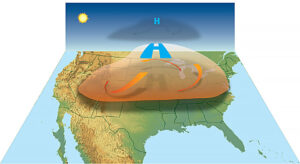Before we learn what makes a battery charger work, let’s examine how a battery functions.
A battery is a self-contained power source that stores chemical energy and converts it into electrical energy; this process is known as electrochemistry. The basic unit of a battery is an electrochemical cell. Typically a cell produces 1.5 volts, therefore the AA, AAA, A, and D size batteries are really cells, not batteries. Batteries are comprised of two or more cells in a series to provide more voltage.
The three main components of a cell are the two electrodes (electrical terminals) and the chemical between them called the electrolyte. There are two external electrical terminals, marked with a plus (positive) and minus (negative) connected to the electrodes.
When you connect a battery’s two electrodes into a circuit, a chemical reaction takes place in the electrolyte. Ions (atoms or molecules with too few or too many electrons) are formed from the materials in the electrodes and are part of that reaction. While this is taking place, electrons travel from one terminal to the other through the outer circuit, powering whatever device to which the battery is connected. This process continues until the battery is completely discharged. At that point, the ions stop flowing through the electrolyte, and the electrons stop flowing through the circuit.
The electrodes in a battery are always made from two dissimilar materials. One of the materials willingly gives up electrons, while the other pulls electrons toward it. If the electrodes were made from the same material, that would not occur and no current would flow.
As a battery generates electricity, the chemicals inside it are gradually converted into different substances. Their ability to generate electrical energy diminishes, the battery’s voltage slowly decreases, and the battery eventually becomes “dead.”
The two principal types of batteries are primary and secondary. Primary batteries are, for the most part, non-rechargeable, thus they are disposable. Secondary batteries are rechargeable, many up to a thousand times or more.
A battery charger is a device used to replenish electrical energy that has been depleted in a secondary cell or battery by forcing electrical current through it.
Charging a battery can be compared to packing a suitcase: the more clothes you place in the suitcase, the harder it is to pack in any more, and if done properly, it takes more time. The process of charging a battery involves reversing the chemical reactions that take place when it discharges. In a lithium-ion battery, used in everything from phones to electric vehicles, charging and discharging involve shuttling lithium ions from one electrode with an abundance of ions to another electrode with few ions. Since the ions all carry a positive charge, it’s easier to transport them to the “empty” electrode at the start. As they start to accumulate there, it becomes more difficult to “pack” more of them in, thus making the later stages of charging proceed more slowly than the start of the cycle. In fact, it can take as long to charge the last 25 percent of a battery as it does the first 75 percent.
Inexpensive chargers use either a constant voltage or constant current applied to the batteries until you switch them off. Leave one on too long, and you’ll overcharge the battery. Take the charger off too soon, and you will not have a full charge.
Slightly more expensive and correspondingly more sophisticated chargers automatically turn off after a set period, however, this does not always prevent overcharging or undercharging because the ideal charging time varies for a variety of reasons, such as how much charge the battery held to begin with, ambient temperature, age of the battery, etc. “Intelligent Chargers” use microprocessor-based circuits to sense how much charge is stored in the batteries, determining from such parameters as changes in the battery voltage and cell temperature, when the charging is likely to be finished, then switching off the current or reducing the current to provide a “trickle” charge at the appropriate time.
Overcharging can be dangerous. If batteries are fully charged and they continue to be charged, the extra energy will be displaced as heat which can result in fires or explosions.
Inductive, or “wireless,” battery chargers use electromagnetic induction to charge batteries. A charging station sends electromagnetic energy through an inductive coupling to an electrical device, which stores the energy in the batteries. This is achieved without the need for metal contacts between the charger and the battery.
Motion-powered chargers have been designed to charge batteries using human motions, thanks to the “piezoelectric effect.”
Electric vehicles are powered by large banks of lithium-ion batteries generating massive amounts of power, making charge times quite lengthy. The Tesla S battery pack which is rated at 75 KWH (kilowatt hours) takes 21 hours with a 3.7 KW (slow) charging station. Rapid charge points up to 150 KW can reduce charging times to under an hour. Tesla superchargers have a max charging rate of 250 KW (480V) and can add 200 miles of range in 15 minutes.
An Israeli company, StoreDot, has developed a lithium-ion battery that can be fully charged in 5 minutes. The unique chemistry and physical construction allow the battery to be charged rapidly. It should be noted that the charging stations used to charge these prototype batteries require substantially more power and incorporate cooling fans.










